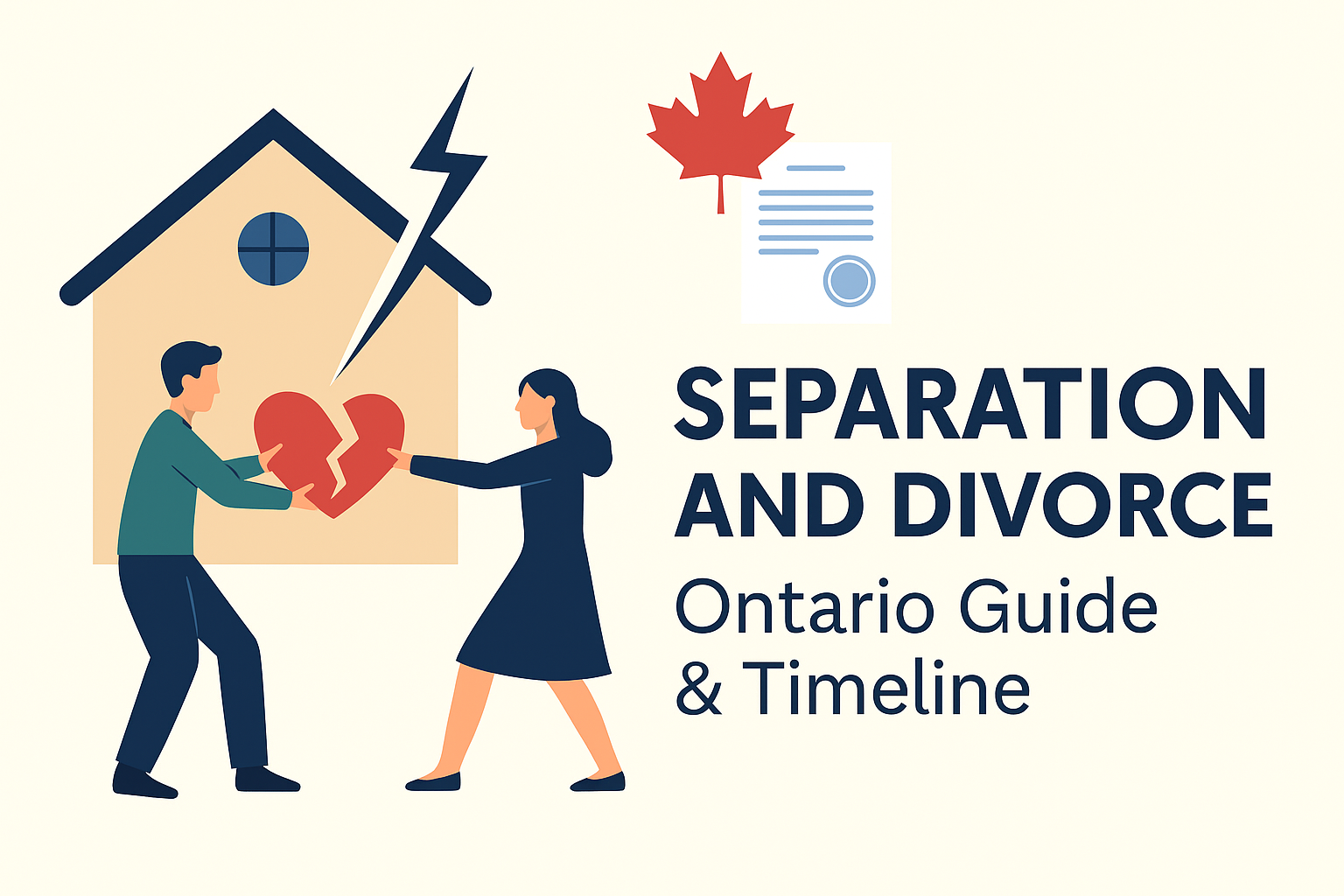Navigate Separation and Divorce in Ontario: Key Steps and Timelines
Separation and Divorce in Ontario can be a challenging and emotional process for families. Understanding the legal steps and timelines in Ontario can help you navigate this difficult period.
When Does Separation Occur?
Separation and Divorce Ontario processes start when spouses decide to live separate lives, even if they remain in the same home. This often involves separate bedrooms, separate finances, and no longer presenting themselves as a couple to family and friends. In Ontario, you do not need a formal court order to be considered separated.
For more detailed information, visit the Ontario Ministry of the Attorney General’s Family Law page.
How to Get a Legal Separation in Ontario: Guide to Separation and Divorce in Ontario
A legal separation in Ontario is typically established through a separation agreement. This written document sets out how you and your spouse will handle parenting, child support, spousal support, and property division. If you cannot reach an agreement, you may need to apply to the Ontario Superior Court of Justice to have a judge decide these issues.
Steps to Get a Divorce
To start a divorce in Ontario, one spouse must file an application with the court. You must be separated for at least one year unless there is adultery or cruelty. The process includes filing court forms, serving documents to the other party, and attending any required case conferences. You can learn more about the forms required by visiting the Ontario Court Forms page.
To obtain a divorce in Ontario, you need to complete the following steps:
-
File a divorce application with the court.
-
Serve the application on your spouse.
-
Wait for a response—if your spouse contests, you may need to attend a case conference or motion.
-
If uncontested, the divorce can proceed after 30 days.
-
Obtain a divorce order and certificate once granted.
Divorce Timelines: Separation and Divorce in Ontario Explained

A simple, uncontested divorce can be completed in as little as four to six months once the application is filed. However, if your case involves child custody, property division, or other complex issues, it can take much longer. Timelines can vary by region, so you might want to check out Legal Aid Ontario’s family law resources for general information about timelines and options.
Should I Have a Separation Agreement?
Having a separation agreement can save you both time and money by resolving issues without going to court. It gives you control over parenting, finances, and property. This written agreement can be negotiated directly between spouses or with the help of lawyers or mediators. It’s important to understand that while these agreements are legally binding, they can be changed if both parties agree or if circumstances change significantly.
Financial Disclosure and Your Responsibilities
Full and honest financial disclosure is essential in any separation and divorce Ontario case. You must share all details about your income, debts, and assets. Courts can refuse to uphold agreements or orders if disclosure is incomplete or inaccurate. This includes

sharing income, debts, and assets. Courts can refuse to uphold agreements or orders if disclosure is incomplete or inaccurate. Learn more about financial disclosure from the Ontario Family Law Rules.
Need Help Navigating Separation and Divorce?
Separation and divorce can be complex and stressful. Our team of family law experts can guide you through the process and help ensure your rights—and your children’s best interests—are protected.. For tailored legal advice and peace of mind, contact our office to discuss your situation.
